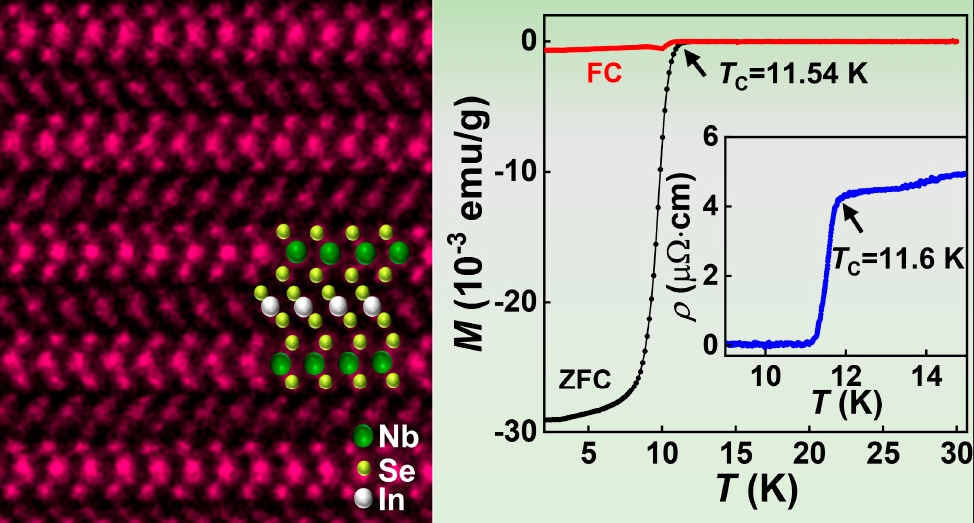| Jan 24, 2024 |
New superconducting material discovered in transition metal dichalcogenide materials
(Nanowerk News) Supported by the electrical transport and magnetic measurement systems of the Steady High Magnetic Field Facility, a research team from the Hefei Institutes of Physical Science of the Chinese Academy of Sciences discovered a new superconducting material called (InSe2)xNbSe2, which has a unique lattice structure. The superconducting transition temperature of this material reaches 11.6 K, making it the transition metal sulfide superconductor with the highest transition temperature at ambient pressure.
|
|
The results were published in Journal of the American Chemical Society ("Enhanced Superconductivity and Critical Current Density Due to the Interaction of InSe2 Bonded Layer in (InSe2)0.12NbSe2").
|
 |
| The crystal structure and superconducting properties of (InSe2)0.12NbSe2. (Image: NIU Rui)
|
|
Transition metal dichalcogenide (TMD) materials have received much attention due to their numerous applications in catalysis, energy storage, and integrated circuits. However, the relatively low superconducting transition temperatures of TMD superconductors have limited their potential applications.
|
|
In this study, the researchers fabricated a new superconducting material with the chemical formula (InSe2)xNbSe2. Unlike the conventional conditions in which isolated atoms are inserted into the van de Waals vacancies of low-dimensional materials, in (InSe2)xNbSe2 the intercalated indium atoms were found to form InSe2-bonded chains.
|
|
"This material has a very high transition temperature among all TMD superconductors," said Prof. ZHANG Changjin, who led the team, "and it has an impressive critical current density."
|
|
The superconducting transition temperature of the (InSe2)0.12NbSe2 sample could be as high as 11.6 K at ambient pressure, which is 60% higher than that of pure NbSe2.
|
|
In addition, the (InSe2)xNbSe2 superconductor exhibits a large critical current density of 8x105 A/cm2, which is also the highest among all TMD superconductors. The critical current density is comparable to that of high-temperature superconductors such as cuprates and iron-based compounds, demonstrating its good application prospects.
|
|
This work opens up new possibilities for advancing superconductivity research and developing high-temperature superconductors with improved performance, according to the team.
|

